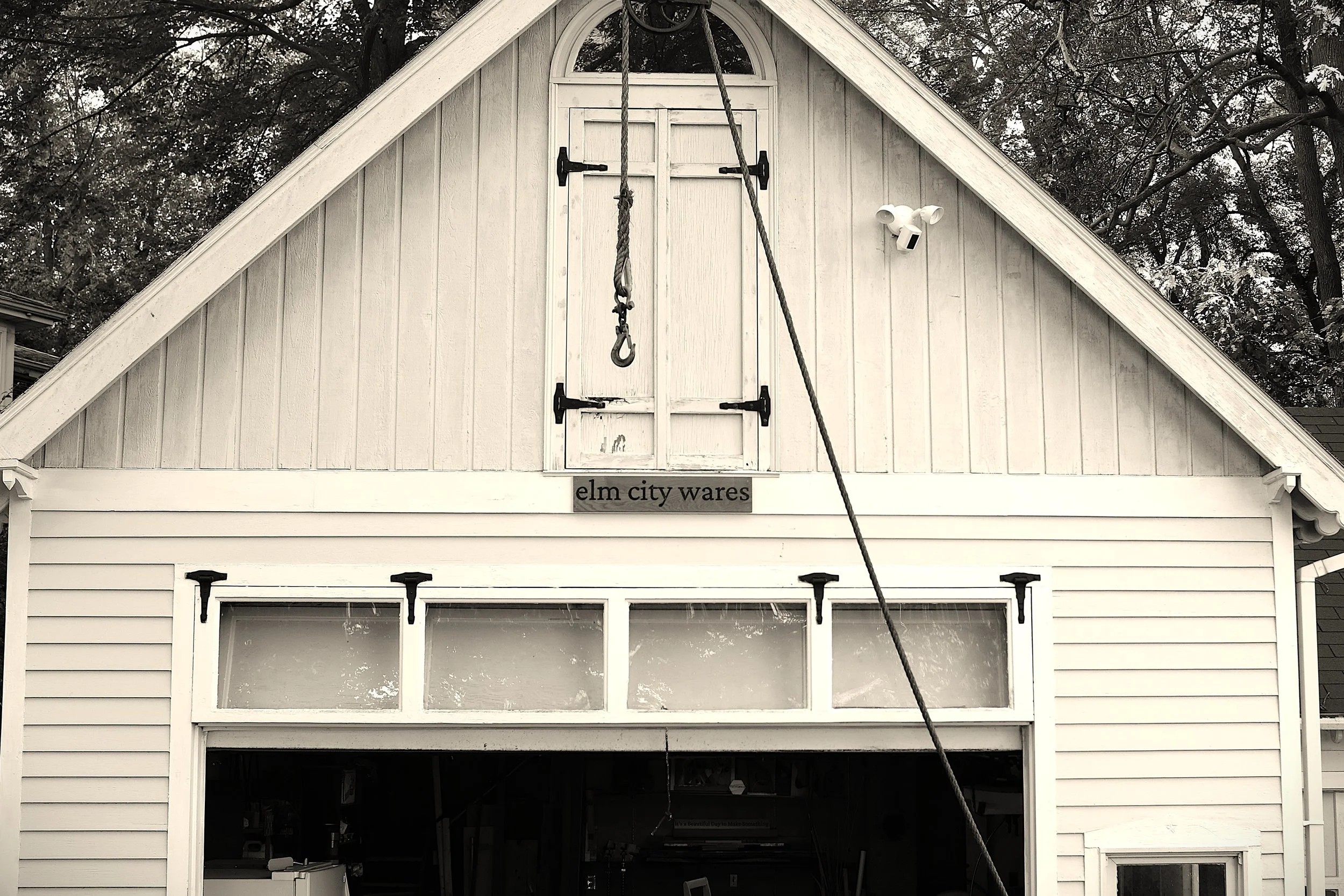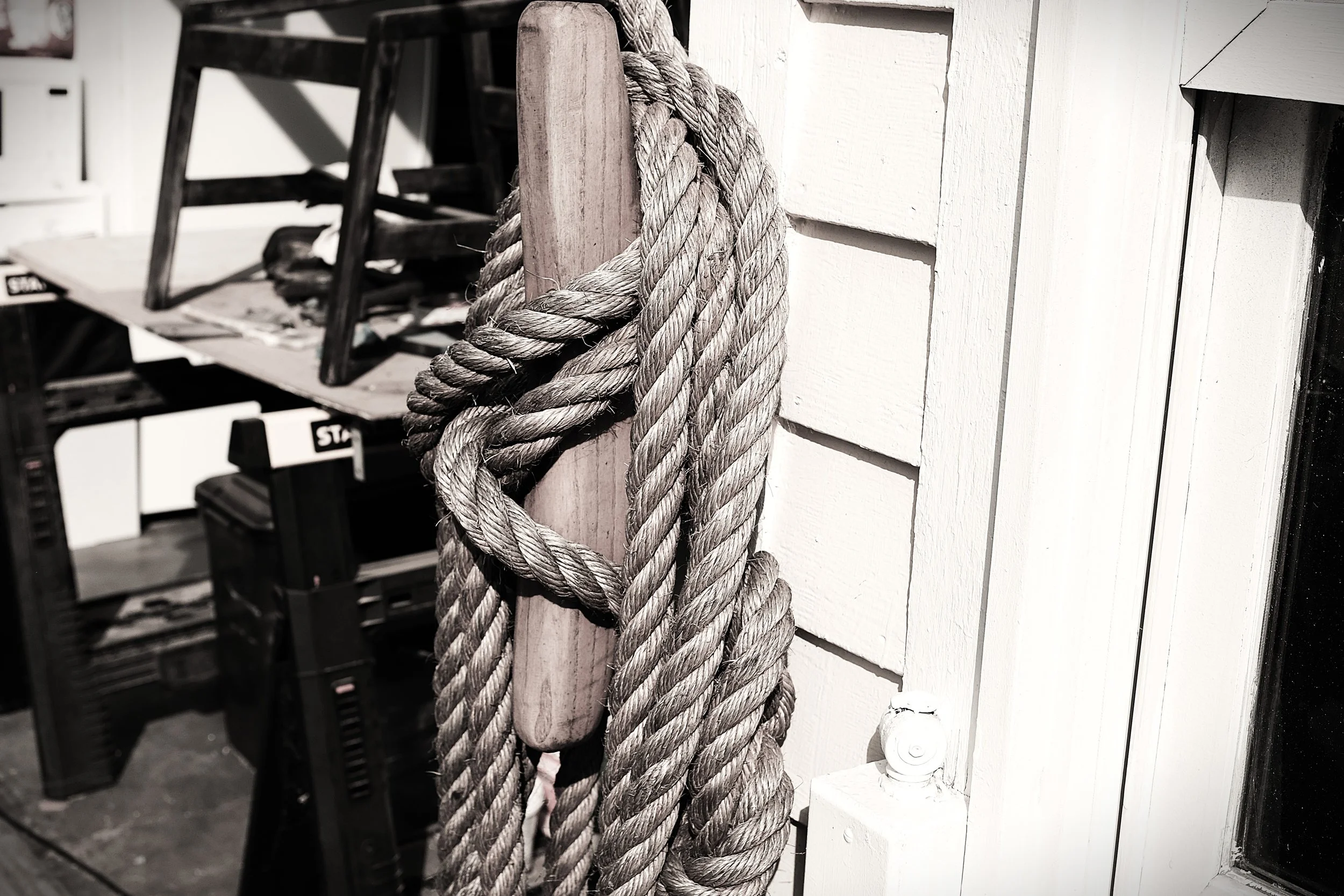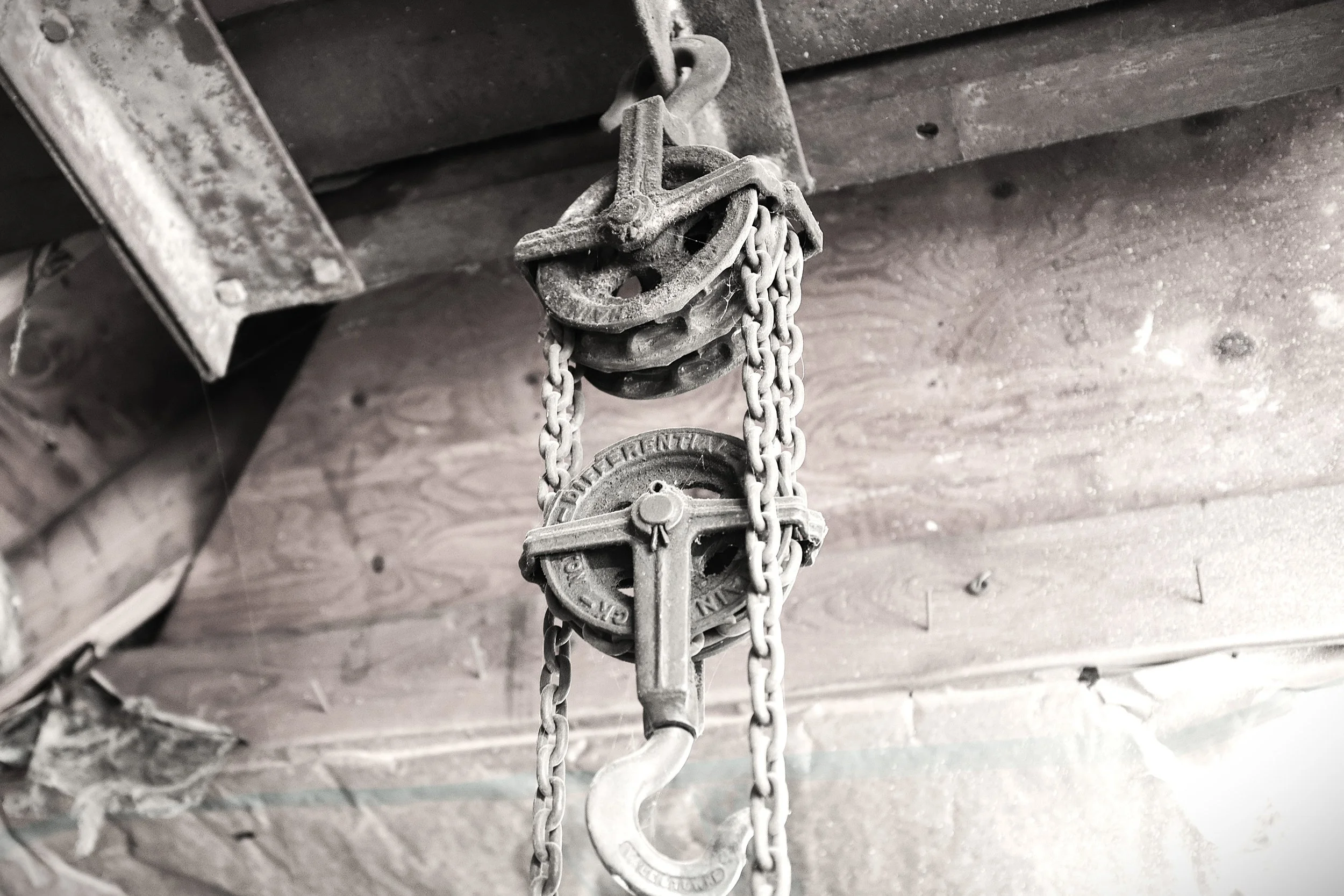Setting Up Our Workshop
Priority number one when we decided to move at an otherwise not great time for buying a house (interest rate-wise) was space for a workshop. We had other criteria - proximity to parents and downtown New Haven, a dedicated home office, guest bedroom, and guest bathroom (so guests weren’t sleeping in our office anymore and waiting in line for a shower) - but we were done with basement woodworking and far too much time away from each other while one of us was at our local maker space. For what we were looking for, a basic garage would have done the trick. What we found was much more than that. The previous owners called it “the barn,” which is sort of what it is. Technically, it’s a detached two-car garage with one oversized port wide and tall enough for a good-sized boat or RV. The “barnish” feature is the upstairs loft, complete with true loft doors and a rope-and-pulley lift that we’ve never used, but it looks great.
We never met Tom and Elizabeth, the previous owners, but we often talk about them as if they were family. They caringly left a handwritten, ten or twelve-page manuscript telling us about the house’s history (original construction: 1886; new addition: 1990), complete with photos dating back to the early 1900s, plus about other things: The stone sculpture mailbox stand was a leftover from a renovation of New Haven’s historic Edgerton Park. The log racks in the fireplace are actually parts of a trolley track that used to run through the neighborhood. The doors to the bathroom and closet in the mud room were salvaged from the renovation of a home in a neighboring town that the famed architect and designer Eero Saarinen built for himself when he moved there to serve as president of the Yale School of Architecture. They saved the best for last: There are three secret compartments located throughout the house. I’m not saying where because they’re secret, but they involve hidden sliding doors and magnets. If you know where to push, a panel pops out.
Tom was a blacksmith by trade, but he liked to work on cars, too. When he added the barn (the manuscript gives the impression that he built the addition to the house and the barn himself), he included steel joists and more pulleys for lifting engines. Like us, he evidently planned to spend a considerable amount of time there, adding a chimney, a furnace, and radiant floor heating throughout (which I haven’t yet figured out how to operate; if you can help, please reach out!). Elizabeth was an avid gardener when they were here, and she left a few secrets of her own. On the one hand, she drew a detailed map of the property and carefully labeled every single plant, including its Latin name, with information about bloom times and care instructions. What she withheld was discovered the first summer we lived in the house: self-seeded sunflowers popped up everywhere. Fun surprise. We loved it. Thank you, Liz.
For the first couple of months, the barn was a haphazard storage room for all the things we hadn’t yet moved into the house. Then we got to work organizing. All the boxes labeled with the names of my kids (who have considered our home their perpetual storage warehouse long after going off to make lives of their own) went up into the loft. Camping gear and hardly ever used exercise equipment were slid over to the smaller carport side of the barn. And then the good stuff - the woodworking stuff - was arranged in the big space with a gloriously high ceiling and shelving that will eventually be upgraded, but works perfectly fine for now.
We have been makers for a long time. I started building and selling shaker-style furniture in the 1990s (with the aid of Norm Abram’s books; God bless This Old House and New Yankee Workshop), and then worked jobs as a finish carpenter to put myself through graduate school, hanging doors and windows, running baseboards, window and door casings, and crown molding, building fireplace mantles, closet systems, decks, siding, that type of stuff, all of which was super useful when renovating my garageless house. Faith’s skill set is more varied. In addition to woodworking, Faith has chops in sewing, ceramics, and linograph, and is also an epoxy resin, laser etching, and CNC aficionado, having had the opportunity to do these things through a membership at MakeHaven. I’ll add a later post about how we still use MakeHaven now that we have a nearly full-functioning shop of our own.
It was immediately clear that some of the power tools needed to be upgraded, and that we needed a few others. Upgraded tools included: table saw and miter saw. New tools: 13” planer, plunge and palm routers (I lost track of my old Porter Cable router somewhere along the way, an essential tool for shaker-style furniture building in the modern era), band saw, oscillating sander, and a gaggle of measuring and marking tools. Spend any amount of time watching woodworking YouTube videos, and you’ll quickly learn one thing to be true: most woodworkers spend as much or more time building shop furniture as they do building regular furniture, or whatever else. We spent another month or so doing that, because it’s actually essential, and then there was a point when the arrangement felt right and we got to work.
Elm City Wares was still not on our radar. We’re hobbyists. We both have other remote jobs, and woodworking is one of the ways we like to spend time together - also biking, camping, weekend brunches, and the farmers market, all of which probably peg us as some sort of meme couple, but whatever. But a neighbor was over and saw something Faith had done and made an on-the-spot commission for, like, 100 of them. They were coaster sets meant as gifts, but the neighbor wanted to purchase a whole bunch of them for a Christmas banquet at a dance school she’s part of. Another friend was over and saw the first “draft” of the Rhizome Stool (a prototype or proof-of-concept is what I was calling it, made from scrap wood shelving from the barn and old webbing from an actual Jens Risom chair I was restoring), and he said geez, Matt, you should sell those. Elm City Wares was born later that night, in our home office, as Faith and I reflected on what might be possible.
If you’re reading this and you like our ethos and what we build, consider yourself “our people.” Also, if you’re still reading this, you can look forward to more posts about new projects, shop upgrades, design and building philosophies, techniques, collaborations, successes and failures, and our personal journey.



